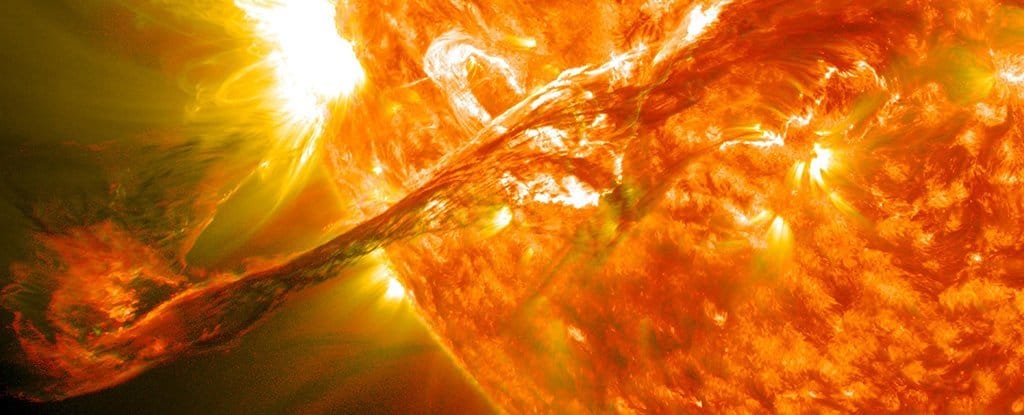Is there anybody out there?

Starlink satellites succumb to solar superstorm
- Dateline
- 13 September 2026
Since the SpaceX constellation of internet satellites called Starlink has been fully operational, it’s been wonderful – fast and responsive broadband everywhere, no matter where in the world you find yourself.
Elon Musk himself sent the first tweet via Starlink in October 2019, but that was on the original pilot constellation of just 60 satellites. Now there are thousands up there, efficiently running on solar power to connect everyone to the web. Well, up to yesterday, that is. Now they’re silent; offline.
A massive solar storm of radioactive particles, generated by a huge solar flare ejected by the Sun, has taken the whole mesh network down. With no atmosphere up there and little protection from Earth’s magnetic field, almost all the communication satellites orbiting the planet have been rendered inoperable; temporarily at least.
Starlink satellites are small, and along with cubesats and micro satellites most vulnerable to space storms and electromagnetic disruption. Their survivability rate is low, and SpaceX is yet to confirm the full damage assessment. Customers and businesses who depend on Starlink connectivity will just have to wait. A few of the bigger, more robust geostationary satellites are still live, but they’re used mainly for broadcast services, and not synchronous comms – they’re just too slow.
Down here on the ground we have our own problems. Many devices, connectors and controllers on the internet of everything have also been fried, and power utilities and microgrids are scrambling to get back online. Every smart city runs on electricity and precision electronics, with instant feedback from 5G networks; now they’re all looking a bit dumb. Try riding a driverless taxi that’s not online – you can’t. Better to hunker down and ‘party’ like it’s 1859!
But there’s one tech giant that seems to have weathered the onslaught of the solar superstorm successfully and is running at near perfect service levels globally. They have their own, private undersea cables, fibre optic networks, and subterranean power generators, well protected from all this atmospheric carnage. It’s Amazon.
Links to related stories
- Elon Musk tweets using SpaceX’s Starlink satellite internet – TechCrunch, 22 October 2019
- Devastating Solar Storms Could Be Much More Frequent Than We Realised – Science Alert, 10 October 2019
- Here's What Would Happen if a Solar Storm Wiped Out Technology as We Know It – Science Alert, 21 June 2018
- Mindbullet: Earth ‘attacked’ by the Sun (Dateline 13 December 2013)
- Mindbullet: Post new-age survivors adopt age-old lifestyle (Dateline 8 August 0001 NewAge)
Warning: Hazardous thinking at work
Despite appearances to the contrary, Futureworld cannot and does not predict the future. Our Mindbullets scenarios are fictitious and designed purely to explore possible futures, challenge and stimulate strategic thinking. Use these at your own risk. Any reference to actual people, entities or events is entirely allegorical. Copyright Futureworld International Limited. Reproduction or distribution permitted only with recognition of Copyright and the inclusion of this disclaimer.